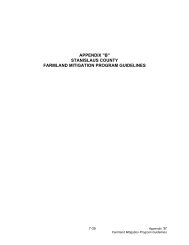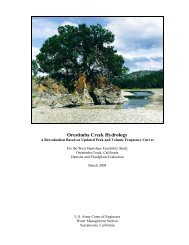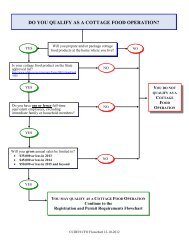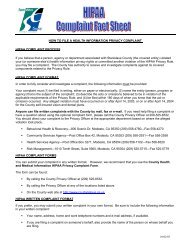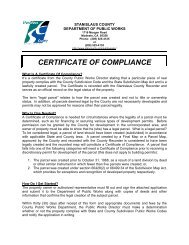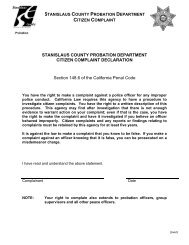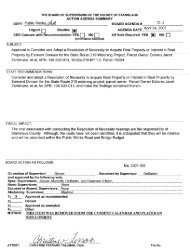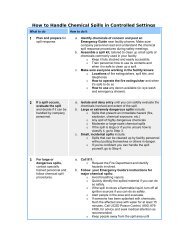Orestimba Creek Feasibility Study - Stanislaus County
Orestimba Creek Feasibility Study - Stanislaus County
Orestimba Creek Feasibility Study - Stanislaus County
Create successful ePaper yourself
Turn your PDF publications into a flip-book with our unique Google optimized e-Paper software.
Economics Appendix – Draft Report - <strong>Orestimba</strong> <strong>Creek</strong> <strong>Feasibility</strong> <strong>Study</strong>, <strong>Stanislaus</strong> <strong>County</strong>, California – September 2012<br />
It is noted that short-term planning prices and yields should not be used for planning capital purchases<br />
that extend beyond the next production year. Review of land grant university’s agricultural economics<br />
new releases indicate that the use of short-term yields and prices is not recommended because current<br />
supply/demand conditions rarely continue for long periods of time and are poor indicators of future<br />
trends. Instead, intermediate to long term planning prices and yields are most appropriate for<br />
evaluating alternative plans. USDA Agricultural Projects to 2020, published in February, 2011 by the<br />
Office of the Chief Economist, World Agricultural Outlook Board, USDA substantiates this claim. It<br />
indicates that projections based on specific assumptions surrounding macroeconomic conditions,<br />
public policy, weather/climate, and international development, with no domestic or external shocks to<br />
global markets, suggest that the long-run development for global agriculture reflects a resumption of<br />
steady world economic growth following the global recession and continued demand for biofuels. This<br />
analysis combined with the aforementioned assumptions support increases in consumption, trade, and<br />
prices. Based on the USDA analysis it is believed that the most recent prices used in this analysis may<br />
conservatively estimate benefits of flood projects. It is, however, difficult to quantify the price and<br />
yield increases, especially while also estimating cost of production increases, to arrive at a long-term<br />
net income per acre value. Accordingly, the most recent prices, yields, and cost of production are used<br />
in this analysis and considered appropriate for this level of evaluation.<br />
Seasonality<br />
Within the computational framework used for the crop damage analysis, the season of the year that the<br />
flood occurs greatly impacts the amount of crop damages sustained. If flooding occurs early within<br />
the year, the producer may be able to re-prepare the seedbed and plant, and ultimately may realize a<br />
return on his efforts. Conversely, a flood of substantial proportion occurring at harvest time will most<br />
certainly result in complete loss for the entire year.<br />
The probability of a storm occurrence in any particular month was provided by the District hydrologist<br />
for the study area vicinity and describes the likelihood of a storm occurring for each month throughout<br />
the year. These monthly probabilities were used as input into the crop damage analysis.<br />
. The monthly probability of flood occurrence was derived from peak annual flow data secured<br />
from the Water Management Section, USACE, Sacramento District. Due to year-to-year<br />
variability flood occurrences may be as much as 4 weeks early or later than the flood occurrence<br />
midpoint. These flood occurrence probabilities for the Newman study area are displayed below<br />
showing the flood event probabilities with uncertainty associated with each month:<br />
54






